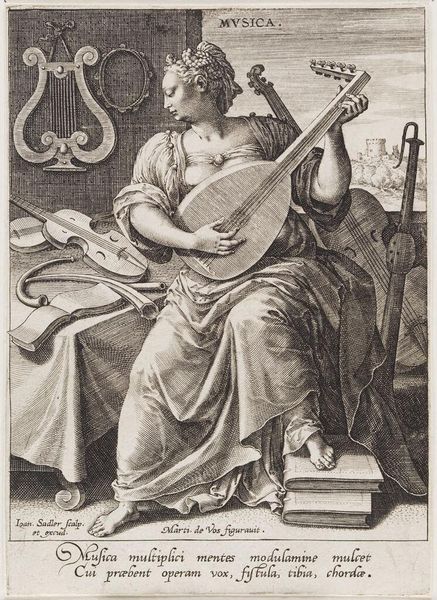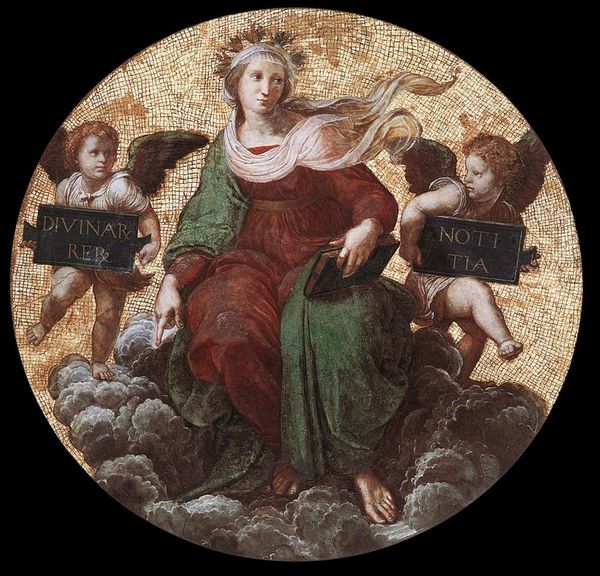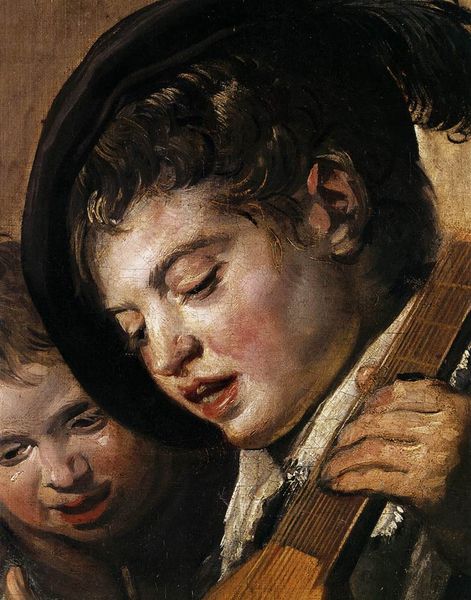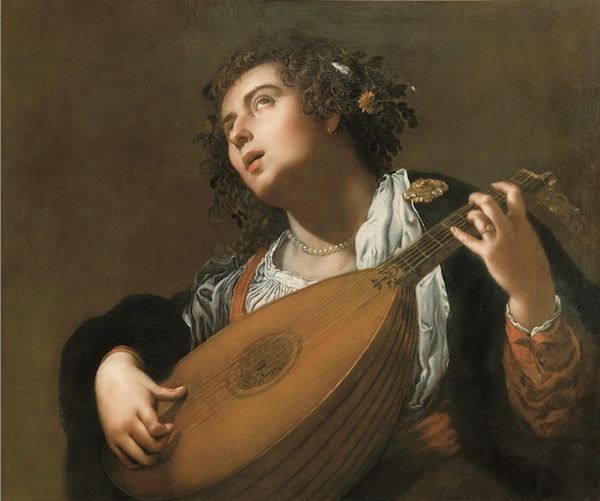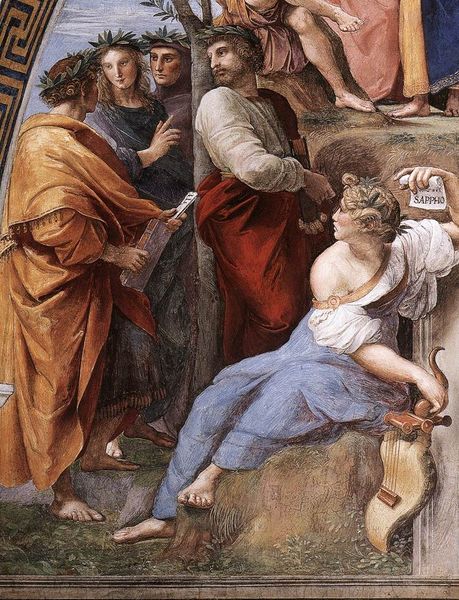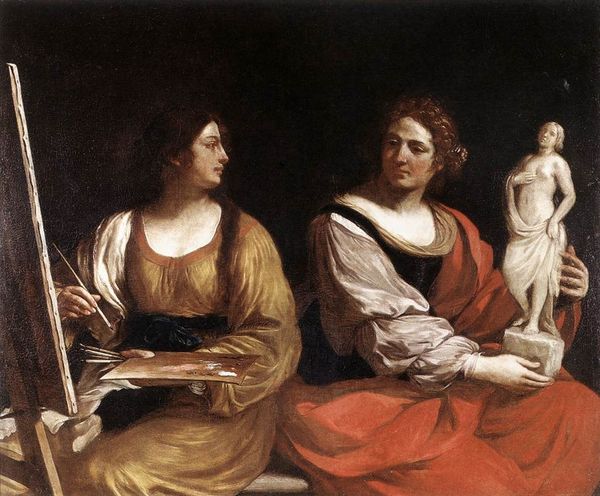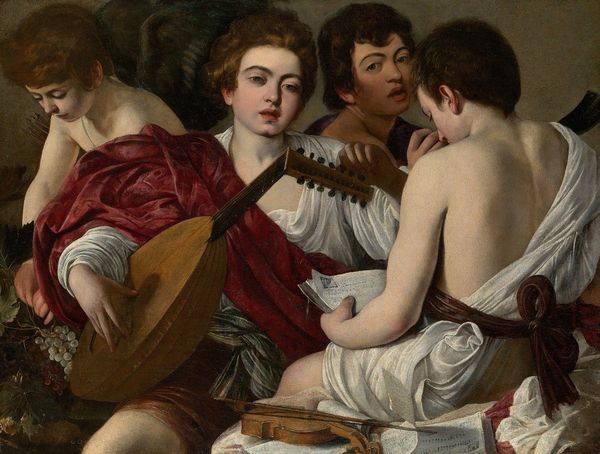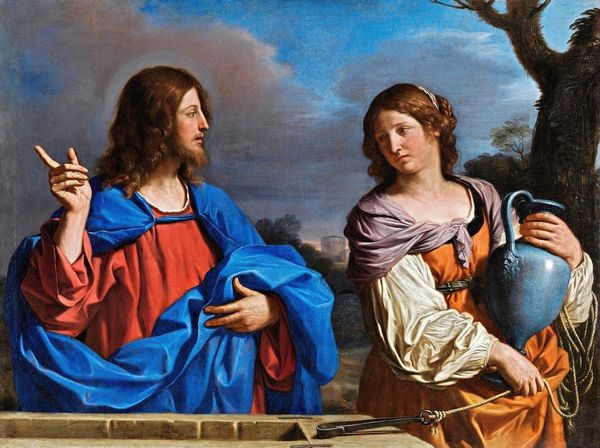
San Giobbe Altarpiece - detail of Music Making Angels 1480
0:00
0:00
giovannibellini
Galleria dell'Accademia, Venice, Italy
#
stage
#
character portrait
#
character art
#
cosplay
#
sculpture
#
culture event photography
#
speaker
#
costume
#
cultural celebration
#
arch
#
christianity
#
men
#
stage performance
#
angel
#
christ
Copyright: Public domain
Curator: Here we see a detail from Giovanni Bellini’s San Giobbe Altarpiece, specifically the panel depicting Music-Making Angels, created around 1480. It resides in the Galleria dell'Accademia in Venice. My initial impression is one of serene contemplation—a very controlled composition. Editor: And my first reaction is how disquieting I find their gazes! They don’t quite meet our eye, yet they aren't wholly averted. It makes me uneasy, as if I’ve interrupted a private ceremony. How does this relate to the artwork as a whole, this Renaissance image of divine worship? Curator: Let's first appreciate Bellini’s skill. Notice the harmonious color palette—the cool blues, greens, and gentle pinks create a sense of unified tone and structure. The composition adheres to a pyramidal structure, a popular choice for Renaissance altarpieces, which gives the arrangement stability. Editor: Absolutely. But considering the context, altarpieces weren't just aesthetic objects. This work was commissioned for the San Giobbe church. Music-making angels represent the harmony of heaven, yes, but they were also actively meant to create a sensory experience for worshippers, encouraging religious fervor. The female figure seated centrally is an early example of the importance of music making to Italian artistic output, although her gaze removes the opportunity for full identification or, even, objectification. Curator: You highlight a crucial point! Notice the light? It illuminates their forms softly. Bellini masterfully utilizes oil paint, allowing for seamless gradations of tone. Observe how the fabric drapes! It reflects the classical interest of the era, but transcends it, becoming utterly Bellini’s. The color acts in a more complex, less naturalistic manner, setting Bellini aside from artists to follow him in the Venetian High Renaissance. Editor: It’s the intersection of art and social role that captures my attention most. These musical angels served to uphold cultural values; their refined appearance and serene expressions served to normalize those ideals. To explore Bellini is also to explore the expectations, not only artistic, that religious and civic entities of the time imposed on artistic representation. Curator: A compelling thought. It prompts us to acknowledge the complexity layered within these exquisitely rendered forms. Bellini clearly synthesized both technical mastery and the symbolic language of his time to make beautiful paintings. Editor: Yes, the interplay between aesthetics and cultural purpose remains powerfully relevant today. To contemplate the detail of "Music Making Angels" and situate the detail within larger art-historical traditions provides new opportunities for us all to consider what it means to depict such seemingly serene, although actively gendered, beauty.
Comments
No comments
Be the first to comment and join the conversation on the ultimate creative platform.
